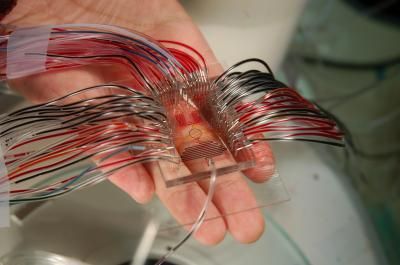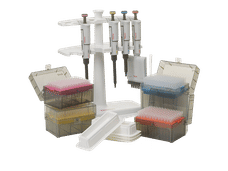The Safe Transfer and Assay of Infectious Agents
Labcyte Awarded U. S. Patent for Transferring Liquids within Sealed Containers
Labcyte Inc. announced the issuance of U.S. Patent 7,405,072, which uses the unique advantages of moving liquids with sound to transfer fluids within a sealed container, free from any physical contact. This process can be applied to the testing of pathogens and other dangerous fluids.
“A pathogen-containing liquid can be introduced into a vessel and permanently sealed. We can then use sound energy to move that liquid with high precision and accuracy within the vessel without ever physically touching the liquid. For example, we can transfer a droplet of a liquid, including blood, from a sample pool within the sealed vessel onto a receiving surface that contains specific test chemistry.” said Chief Technical Officer, Richard Ellson. “Sound waves enter the container, but the pathogens cannot leave. Since acoustic transfer is completely ‘touchless’ and eliminates pipette transfers, there is no contamination of pipette tips, labware, or other samples. Wash solutions are not necessary.”
Acoustic droplet ejection allows volume transfers of a few nanoliters or less. This technology enables miniaturization of biological assays. Transferring liquids within a sealed container minimizes exposure risk for technicians who handle the samples.
Other news from the department research and development
These products might interest you
Most read news
More news from our other portals
See the theme worlds for related content
Topic world Pipetting
Pipetting is one of the most basic yet critical techniques in the laboratory. It enables the precise and controlled transfer of liquids, which is essential for accurate measurements and reliable results. Whether in DNA analysis, cell culture or biochemical assays, correct pipetting significantly influences the quality of the results.

Topic world Pipetting
Pipetting is one of the most basic yet critical techniques in the laboratory. It enables the precise and controlled transfer of liquids, which is essential for accurate measurements and reliable results. Whether in DNA analysis, cell culture or biochemical assays, correct pipetting significantly influences the quality of the results.
























































